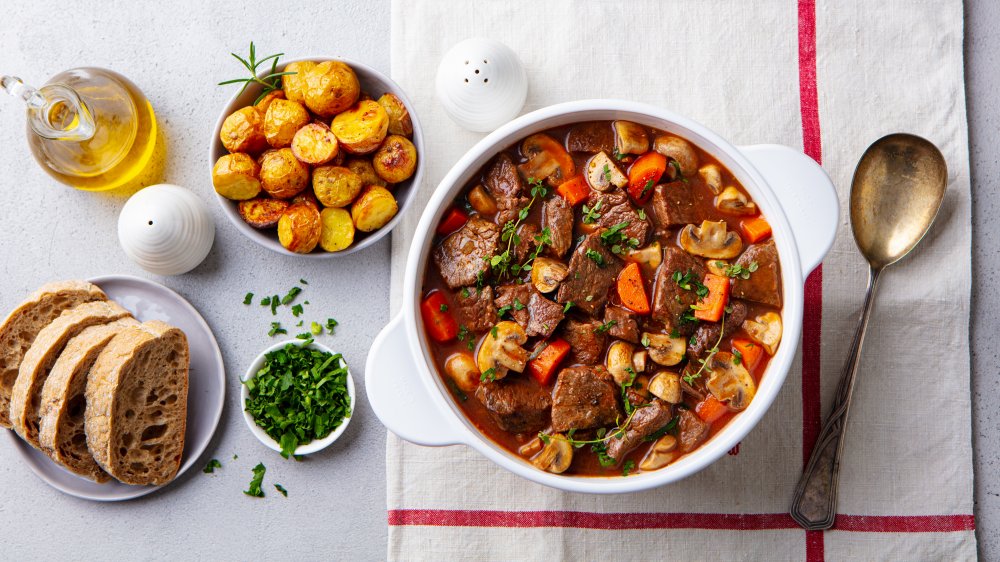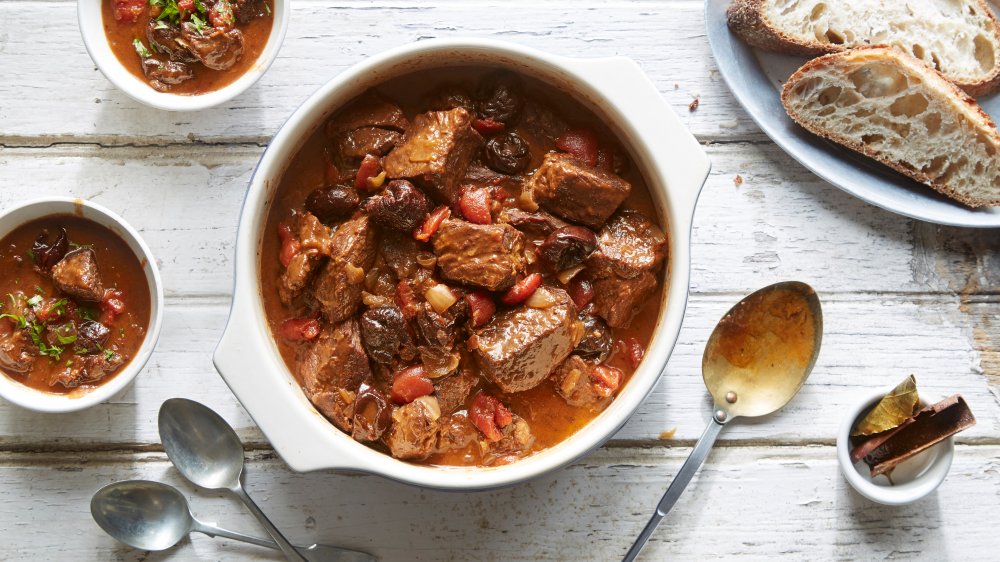Why You Should Think Twice About Using Stew Meat For Stews
When you're planning on making beef stew for dinner, your first step is probably heading to the grocery store or butcher to pick up some stew meat. But while those packages of stew meat might be convenient, they're usually not your best option if you want a tender, mouthwatering beef stew. Instead, most stew recipes will turn out better if you know exactly what meat you're using.
According to The Kitchn, the problem with packages of stew meat is that you don't always know what you're getting. Usually, it's a combination of what the butcher has left over from other cuts. And while using a variety of meat in your stew does sound tasty, if you don't know what you've got, there's almost no way to cook all of it properly. Some pieces of stew meat might cook quickly and end up tough and overdone, while others might benefit from all the time in the pot and turn out perfectly. The result will probably be each bite tasting a little different, which isn't exactly what you want – especially when some pieces could end up with more fat or gristle than others.
The best meat to use for beef stew
Stew meat definitely isn't the answer, but there are several cuts of beef that taste delicious in a stew. Chuck is one that you'll see recommended often. According to Taste of Home, chuck is one of the best meats to use in beef stew because it can simmer for hours and has plenty of connective tissue. As the beef cooks, the tissue melts down, releasing gelatin, which will give your stew the richness you crave. Chuck releases more gelatin than other similar cuts, like the round from the rear muscle, and it'll be moister once your stew is finished cooking.
Chuck isn't necessarily your only option though. According to Serious Eats, several other cuts will also make a mouthwatering stew. Short ribs are pricier than chuck, but they'll also give your stew a deeper flavor. Oxtail is fattier and contains more gelatin than pretty much all other cuts, but you'll also have to cook it longer than most other meats, and you won't end up with as much beef in every bite. Finally, brisket is another option, but the best brisket to use for stew is the fatty point, which is harder to find than the lean flat. You can definitely experiment with a few different cuts to find your favorite, but if you just want an easy, yummy beef stew, skip the stew meat and pick up a package of chuck instead.

